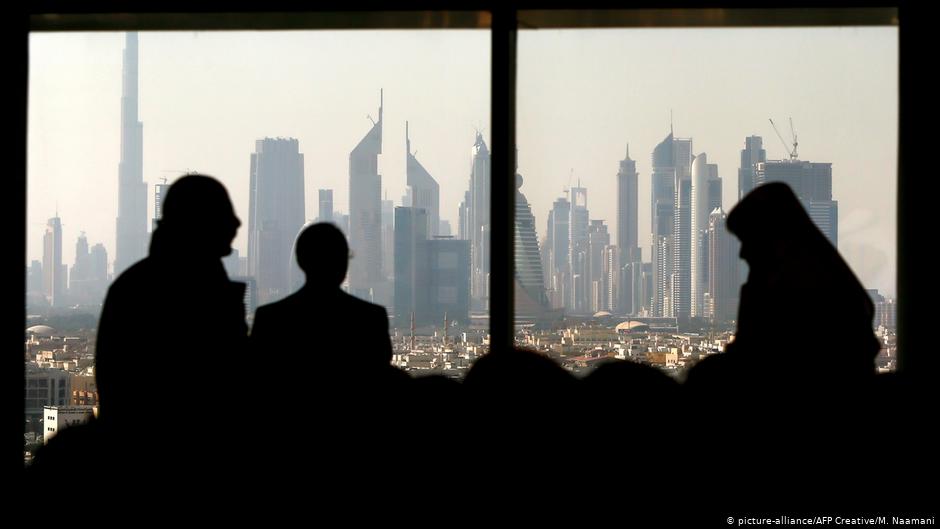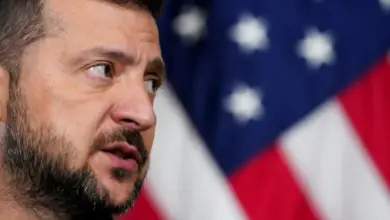
With the rise of the “Islamic State,” a host of Arab-led initiatives were created to disrupt extremist content online. But their activities have triggered concerns about their wider role in countering terrorism.
Less than five years ago, the “Islamic State” (IS) militant group’s digital presence was so momentous, it forced the US government and Arab states to rethink their approach to countering extremist messaging online.
That impetus triggered a wave of Arab-led initiatives, including several conducted in tandem with Washington. One of those, the Sawab Center, was launched in 2015 as “an online engagement and messaging operation” led by the United Arab Emirates aimed at supporting the US-led coalition’s efforts against IS.
With a budget of six million US dollars and just over a dozen staff members, the joint venture also “promoted information sharing with international police organizations when family members report on relatives who have become radicalized,” according to a report by the US Congressional Research Service.
In 2017, US President Donald Trump spearheaded a new initiative with Saudi King Salman, establishing the Global Center for Combating Extremist Ideology — or Etidal, Arabic for moderation. At the time, Trump placed the responsibility of combating extremism and promoting a “moderate Islam” on Arab allies, such as Saudi Arabia, the UAE and even Qatar.
Challenges of counter-messaging
But the approach seems uneven at best, and ineffective at worst. Sawab’s English and Arabic Facebook account boasts more than 1.6 million followers, however many of its YouTube videos rarely garner more than single-digit views in recent months.
Etidal’s latest efforts include a platform called Moderate aimed at helping “members of society contribute […] in combating extremist content on social media platforms.” However, the new feature amounts to little more than an online contact form with an upload feature. It is unclear where this information goes and who deals with it.
Etidal has launched an interactive feature to its website, called 'Moderate', to help members of society contribute alongside Etidal in combating extremist content on social media platforms. #SeekingModerateWorldhttps://t.co/abb8H3bIot pic.twitter.com/knkdW3VL3Y
— ETIDAL | English (@etidalorg) June 15, 2020
The Sawab Center has celebrated reaching eight million social media followers while Etidal says its software takes only six seconds to intercept uploaded extremist content, but beyond these metrics, neither platform offers further proof of their efficacy.
DW contacted the Sawab Center and Etidal but did not receive a response before publication.
Such preventative programs are widely understood to be difficult to assess, with the US Homeland Security Department noting in a 2016 report “the challenge of trying to prove that a behavior or action has not occurred.”
“If you actually peel away the onion, it’s a lot of resources being directed towards doubling down on an issue where, as more research is done, it’s being seen as less and less effective,” said Eric Rosand, non-resident senior fellow at the Washington-based Brookings Institution. “In the meantime, the more relevant issues are not getting the attention they deserve.”
“The expert community realizes that the agenda has moved well beyond what Etidal and Sawab are doing, but some governments haven’t, so there is still an audience and it’s still a way to curry favor with some Western capitals.”
Putting pressure where its due
However, even beyond debates about counter-messaging’s effectiveness, studies have suggested such Arab-led initiatives are, at times, used to promote a conceptual hegemony over the meaning of Islam and even target dissidents.
A 2018 report from the Center for American Progress said that Etidal and Sawab worked “to position these countries as global leaders of moderate Islam and the fight against extremism — a narrative that is projected globally but is especially designed to resonate with the West.”
Etidal’s director had once even stressed that the Muslim Brotherhood was the initiative’s main target and arresting bloggers and countering pro-Qatar material is one of its key missions, according to a Norwegian Center for Human Rights report on Saudi counter-terrorism measures published last year.
However, while certain initiatives may have abused counter-messaging and related measures, those operating in the field argue that it forms part of a holistic toolbox for combating terrorism when used appropriately.
“Counter-messaging was originally designed to effectively neutralize extremist narratives and online propaganda,” said Tomas Olivier, former Dutch intelligence officer and counter-terrorism expert for Netherlands-based security company Captara.
“From my own experience, I can say that measures to disrupt communications from individuals, cells or organizations — to step into their timeline and operational planning cycle — is likely one of the most constructive and essential tools for putting pressure on these often highly-sophisticated campaigns.”
___
By Lewis Sanders IV, Tom Allinson
Image: (@picture-alliance/AFP Creative/M. Naamani)




